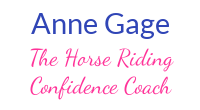I recently received an email from a young woman confused by her horse’s sudden change  in behaviour. She and her mare have been together for 3 years. The first year, they showed in hunter, jumper and eventing competitions. The mare was “a double clear, point and shoot, honest horse” and they worked well together. Then the mare was off for a year with a foot injury. When she started training again, the mare was going well and they began jumping higher fences. All was going well until the rider was thrown at a fence during a show.
in behaviour. She and her mare have been together for 3 years. The first year, they showed in hunter, jumper and eventing competitions. The mare was “a double clear, point and shoot, honest horse” and they worked well together. Then the mare was off for a year with a foot injury. When she started training again, the mare was going well and they began jumping higher fences. All was going well until the rider was thrown at a fence during a show.
“I got back on did the next round which went okay. Then in the final jumper round, she threw me again at the last fence and by then I was just confused. I didnt know, and still don`t know what happened to our connection and our ability to work as a team over the courses. Since then she has thrown me 5 times, and we always have refusals during our jumping lessons and shows.”
Now the young woman doesn’t know what to expect when she’s jumping her mare. She’s tired of falling off and has become afraid of jumping – something she hasn’t experienced before. As she says
“the nerves and anxiety take over.”
When a horse’s performance changes for the worse, you need to do some detective work to get to the root cause of the problem. Only when you know what the cause is can you apply the appropriate solution.
Horses are creatures of habit and only change their behaviour when something is getting in the way. Following these tips can help you find the cause and the best solution to your horse’s performance problem.
1. Check for a physical problem. Horses can be sore without showing lameness or other noticeable signs. It’s natural for them as prey animals to hide any sign of weakness which would make them a more appealing target for predators. So horses can be very good at hiding muscle soreness or chiropractic misalignment. It is possible that she has some lingering muscle soreness or a misalignment from when she had the foot problem. You may have experienced this yourself that when one part of the body is sore, other parts take on extra work and can get sore. Have an equine massage therapist or chiropractor (or both) give your horse a thorough examination. They can find and relieve some physical problems that you or your veterinarian may have missed.
2. Check saddle fit. Horses’ muscle development can change with age and the amount and type of work they are doing. Saddles also change with wear. The stuffing can pack or break down and wrinkles can develop in the leather causing pressure points. Since this mare had a year off from any work, her shape will be much different than when she was in regular work. Check the condition of your saddle and how well it fits your horse. Here’s a link to some good videos about how to check saddle fit. http://www.schleese.com/9PointChecklist. A good saddle fitter can also help with the assessment and may even be able to make adjustments to your saddle so that it fits your horse better.
3. Go Back to Basics with Your Horse. Training problems can also happen because the horse is moved along more quickly than she is physically or mentally ready to handle. Go back to the work your horse can comfortably perform and bring her along more slowly. A good place to start is with flat work that helps strengthen her hindquarters and back – both necessary for jumping higher fences. Then rebuild her confidence by working over poles, cavalletti and smaller jumps.
4. Go Back to Basics with Your Riding. Suppleness and balance are both very important components of good riding. Suppleness is replaced with tension when riders lose their confidence. The riders’ balance may be thrown off if they progress too quickly without having a solid independent seat. Rider tension and imbalance impact the horse’s ability to perform well. Focusing on improving your seat and hands improves your softness, suppleness and balance in the saddle – which makes you a better partner for your horse.
5. Enlist your coach’s help. Have a very honest conversation with your coach about how you are feeling. Work with him or her to go back to a level of riding where both you and your horse are comfortable so that you can ride without tension, improve your seat and your riding position and your horse can develop the strength and suppleness for the work you want her to do. As you rebuild your confidence, your horse’s confidence and fill in any gaps in your riding foundation, you and your horse will become better partners for each other.
The most important thing to remember is that your horse’s behaviour is her communication. When she has been performing consistently well and then suddenly changes, there is something getting in her way. Figure out what the cause is and then you can work on the most beneficial solution.
I would love to hear what the greatest challenge is that you are facing with your horse right now? What challenges have you faced and overcome? Share in the comments below.
If you want to work with me live and in person to learn more strategies and techniques for increasing your confidence, improving your horse’s behaviour and building a stronger partnership with your horse, visit my website or contact me about hosting a clinic or workshop at your location.
Enjoy your journey.
My book is now available! “Confident Rider, Confident Horse: Build Your Confidence While Improving Your Partnership with Your Horse from the Ground to the Saddle”. Click here to order.
Interested in organizing a clinic at your location? Click here to contact me for more information.
You’re welcome to use this article in your newsletter or blog as long as you include my credit information: ~ Written by Anne Gage, Confident Horsemanship (www.annegage.com).
I would also appreciate it if you’d send me a copy for my media files.
Anne Gage ~ Confident Horsemanship


Hi
I recently moved to a small west African country with no equestrian history or facilities.
The only horses I have ridden here are beach horses, hardly trained and seemingly hard mouthed.
Riders yank at their mouths and pull the reins a lot.
Should I retrain myself to ride like this before I buy one of these African horses?
Or should I attempt (with little experience) to retrain mine to be more sensitive?
There are no horse professionals here 🙁
Advice welcome!
Sarah
Hi, Sarah … Definitely do not retrain yourself to ride the way the horses have been ridden. Since you don’t have access to horse professionals in your area, you’ll have to learn from other resources. Take a look at some of my videos on YouTube. When you do get your own horse, start with ground work exercises to build trust in contact. These exercises will also help you develop softer hands. You might even consider trying a bitless bridle like a side pull or Dr. Cook (not a hackamore). Here’s a link to my video on working with your horse in-hand to develop trust about contact. In the video, I’m working with a mare who was previously yanked & pulled on and does not trust contact at all. http://youtu.be/g-GIOUJEh-E
Enjoy your journey.